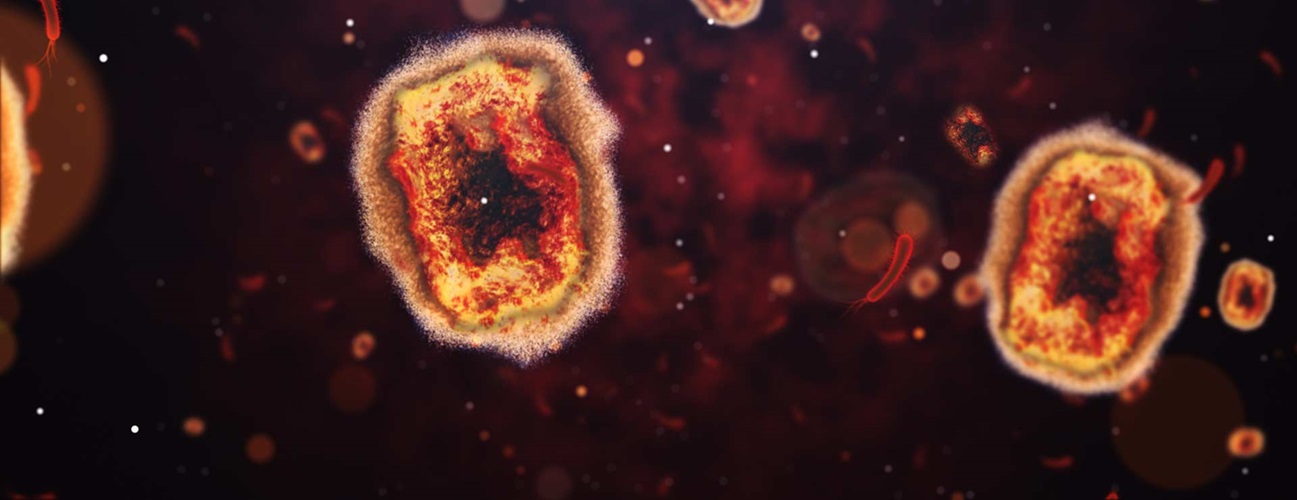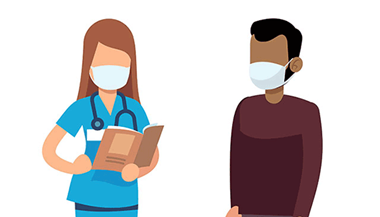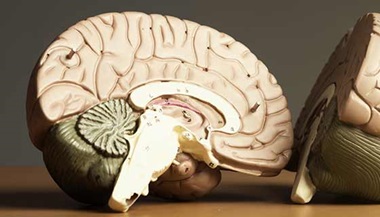Monkeypox
Monkeypox is an infection caused by a virus similar to the now-eradicated smallpox virus. It has been most common in some African countries, but outbreaks have occurred in other areas from time to time. In 2022, the World Health Organization declared a global health emergency since monkeypox had spread to many countries through social interactions and intimate contacts.
What You Need to Know
- Monkeypox is spread by close contact and exposure to an infected person's respiratory droplets, skin lesions or bodily fluids.
- Monkeypox symptoms include swollen lymph nodes, fever, and a rash that may initially be mistaken for chickenpox or a sexually transmitted disease if in the genital or anal region.
- While monkeypox cases spreading globally in 2022 can cause severe disease, the infection most often clears up on its own. Monkeypox may be most severe in young children, especially if they have poor nutritional status. In previous years fatal cases have occurred, primarily among children in Africa.
- Vaccines can prevent monkeypox. They are currently in short supply and being used to prevent monkeypox disease in people who have been exposed to the virus. When it becomes more widely available, the vaccine may be appropriate to protect at-risk populations, such as men who have sex with men, bisexual people, commercial sex workers and others who engage in behaviors that put them at higher risk for encountering the virus that causes monkeypox.
- The infection continues to spread, but because transmission requires close personal contact, the rate is much slower than that of SARS-CoV-2 virus (the coronavirus that causes COVID-19) and causes fewer cases.
On This Page:
Overview | Symptoms | Causes | Diagnosis | Types | Treatment | Prevention & Exposure
What is monkeypox?
Monkeypox is an infection caused by a virus. In some countries, the disease has been endemic ― occuring among the general population – for quite some time. It is now spreading more widely around the world. Paul Auwaerter, M.D., M.B.A., clinical director of the infectious diseases division at Johns Hopkins Medicine, provides an overview.
Monkeypox Symptoms
Monkeypox has a long incubation time. That means it can take four to 21 days to produce illness after someone has been exposed to the virus.
- Monkeypox symptoms in humans usually start with a general, all-over feeling of being ill.
- Flu-like symptoms such as fever and muscle aches develop.
- Lymph nodes become swollen.
- A few days later, a blister-like rash appears that looks like chickenpox. This may begin on the face and spread elsewhere on the body, or, if acquired during intimate or sexual contact, may begin in the genital or peri-anal areas.
- The rash dries up a week or two later, and recovery continues.
Altogether, monkeypox infection lasts two to four weeks. Infected people are no longer contagious to others after all of their skin lesions crust over or heal.
What causes monkeypox?
Monkeypox is caused by a virus related to the one that causes smallpox, but monkeypox disease is usually milder than smallpox. It is called monkeypox because it was first isolated in monkeys. However, rodents, not monkeys, are the primary carriers of the virus. The World Health Organization is going to rename the illness because the name monkeypox is misleading. The smallpox vaccine provides some protection against the monkeypox virus and monkeypox disease may be more likely to affect people who have never been vaccinated against smallpox. The smallpox vaccination program ended in the U.S. in 1972.
In people, monkeypox is spread through contact with an infected person's rash or bodily fluids, including respiratory droplets. Close personal contact, sexual or not, can cause a person to become infected.
Monkeypox Diagnosis
A health care professional can identify monkeypox with a sample of fluid swabbed from the rash. Your doctor may need to rule out other rash-producing illnesses such as chickenpox, measles or syphilis, as well as screen for sexually transmitted diseases such as HIV, syphilis and others.
Are there different types of monkeypox?
Yes, there are two strains of monkeypox. The strain that is endemic in several countries in West Africa, which has been seen in outbreaks outside of Africa in 2022, is less severe than the strain that occurs in the Congo basin. So far, the strain in the current outbreak seems similar to the one seen in West African countries and has caused mild illness in most people infected with that virus.
Is monkeypox treatable?
Although many cases resolve on their own, people who are more ill from monkeypox can be treated with antiviral agents. Smallpox therapies may be used, although data on their effectiveness for this condition is limited.
The Centers for Disease Control and Prevention (CDC) suggests that people with severe monkeypox disease, patients who are immunocompromised, children younger than age 8, and people who are pregnant should be considered for antiviral treatment following consultation with the CDC.
The Food and Drug Administration has approved vaccines to prevent monkeypox, including Jynneos. When given early enough after exposure (within four days), vaccines may lessen the severity of the disease, so health care professionals may recommend vaccines for those who have been in close contact with a person who is infected. Also, antivirals are being tested to see if they are safe and effective in easing symptoms.
How to Prevent Monkeypox
The best ways to keep from getting sick with monkeypox are:
- Avoid close contact with people who are infected or their personal belongings, bedding, etc.
- Wash your hands frequently and thoroughly.
- Wear a mask and gloves or other protection when caring for someone with monkeypox or disease symptoms.
- The WHO has suggested limiting the number of sexual partners.
What to Do If You Are Exposed to Monkeypox
According to the CDC, people who have been exposed to an infected person or animal should monitor their health for three weeks after that exposure. You can go about your normal activities if you don’t have any symptoms. Do not donate blood, cells, tissue, breast milk, semen or organs during this three-week period.
Follow these steps:
- Take your temperature twice daily.
- If you develop a fever (100.4 or above), chills, swollen lymph nodes or a new rash, immediately self-isolate and contact your local or state health department for further guidance.
- If you only have chills and swollen glands but no fever or rash, isolate at home for 24 hours.
- If you get a fever during this time, contact the health department.
- If you don’t develop a fever but still have chills or swollen glands after 24 hours, contact your doctor for a diagnosis.
Is monkeypox fatal?
It can be. Some strains of monkeypox have a death rate ranging from 1% to 10%, based on data from cases in some African countries.
Will there be a monkeypox pandemic?
A monkeypox pandemic is unlikely for several reasons:
- First, the monkeypox virus is not new. What is new is the patterns of infection among people.
- Second, vaccines and medicines that can help lessen the impact of this disease are already available.
- Finally, since monkeypox transmission requires person-to-person contact, it is less likely than other viruses (such as SARS-CoV-2, which causes COVID-19) to spread among large numbers of people who do not have close physical contact.





